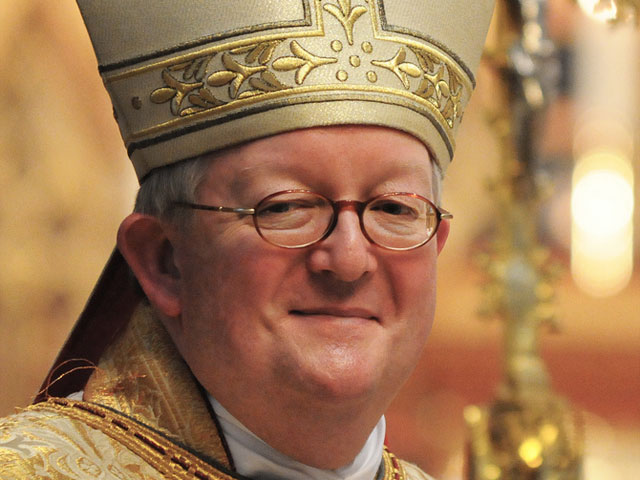A few days ago, George Conger took to this space to “bury” The New York Times for suddenly noticing the rise of Calvinism in unlikely Protestant venues, such as (Southern) Baptist churches.
Today, I’d like to congratulate the Times for, mostly, “getting it” when it comes to Germany’s public schools and religious instruction, in this case about Islam. Here’s the top of that report:
FRANKFURT — For the first time, German public schools are offering classes in Islam to primary school students using state-trained teachers and specially written textbooks, as officials try to better integrate the nation’s large Muslim minority and counter the growing influence of radical religious thinking.
The classes offered in Hesse State are part of a growing consensus that Germany, after decades of neglect, should do more to acknowledge and serve its Muslim population if it is to foster social harmony, overcome its aging demographics and head off a potential domestic security threat.
The need, many here say, is ever more urgent. According to German security officials and widespread reports in the German news media, this past semester at least two young Germans in Hesse — one thought to be just 16 — were killed in Syria after heeding the call for jihad and apparently being recruited by hard-line Salafist preachers in Frankfurt.
This is, in my opinion, Times reporting just about at its best: a crisp, clean lede, and a close-to-the-top explanation of what it means.
Granted, it’s a bit late, I would suggest, in terms of Germany’s government, since questions about assimilation of “guest workers” from predominantly Muslim nations, beginning with Turkey, has been an issue for decades. But better (very) late than never, one supposes.
There’s also a bit of explanation on how “religious instruction” has come to be in “public” (i.e., state-sponsored) schools, a concept that might be a tad jarring in the U.S. of A., where even bringing candy canes to class can get a grade-schooler in trouble. Read on.
The Hesse curriculum effectively places Islamic instruction on equal footing with similarly state-approved ethics training in the Protestant and Catholic faiths. By offering young Muslims a basic introduction to Islam as early as first grade, emphasizing its teachings on tolerance and acceptance, the authorities hope to inoculate young people against more extreme religious views while also signaling state acceptance of their faith.
Parents have the option to enroll their children in the religious education classes offered in the district. Nurguel Altuntas, who helped develop the Hesse program at the state’s Ministry of Education, said the sign-up for 29 classes in immigrant-heavy districts was enthusiastic.
The classes are optional, and are designed to emphasize “tolerance and acceptance.” So far, so good, and, in fact, very good, in my opinion, when it comes to a specific object lesson:
In one class, Timur Kumlu recently asked his 19 6-year-old students each to take a strand from a large wool ball. He then instructed the children — whose parents hailed from Muslim countries as varied as Afghanistan, Albania, Morocco and Turkey — to examine how, like the threads, they, too, were woven together.
It was a simple lesson containing a gentle message filled with symbolism — that they were linked by their Islamic faith and practices of prayer.
“We are now all bound together — you come from different countries, and so do your parents,” said Mr. Kumlu, who reminded the children that while their parents came from Afghanistan or Albania, they were born in Germany.
His generally well-behaved pupils squirmed a bit, but listened attentively. “They come here with such different backgrounds,” Mr. Kumlu said after the lesson. “We must educate so that they develop a personality with common roots,” in Germany and in Islam.
There is, however, only a glancing reference to anyone remotely resembling an Islamic authority, and then it’s a attorney and organizational person, not an imam:
Fazil Altin, 34, a lawyer who is president of the Islamic Federation, said Muslims and the city authorities in Berlin had wasted 20 years while they battled in court about whether Islam could be taught. Then, Mr. Altin said, the federation had to overcome suspicions about indoctrination — and all for 40 minutes’ instruction per week, which he called “pretty paltry.”
In his view, it will take more than formal state instruction in Islam to bridge the cultural gap between observant Muslims and a highly secular German society. “It is difficult to be a Muslim in Germany,” said Mr. Altin, who said he had been denied access to clients in jails because of his faith. “The fact is, we are seen as a danger.”
Along with getting some more Islamic authorities in the piece, it would have been helpful to have an explanation of why some in Germany see Muslims “as a danger,” so as to put Altin’s complaint in context.
Again, The New York Times mostly got it right here: there’s apparently good instruction in the state of Hesse, and the idea is “mainstreaming” children into tolerance. There are some unanswered questions, however, as well as extra context that could have been added.











